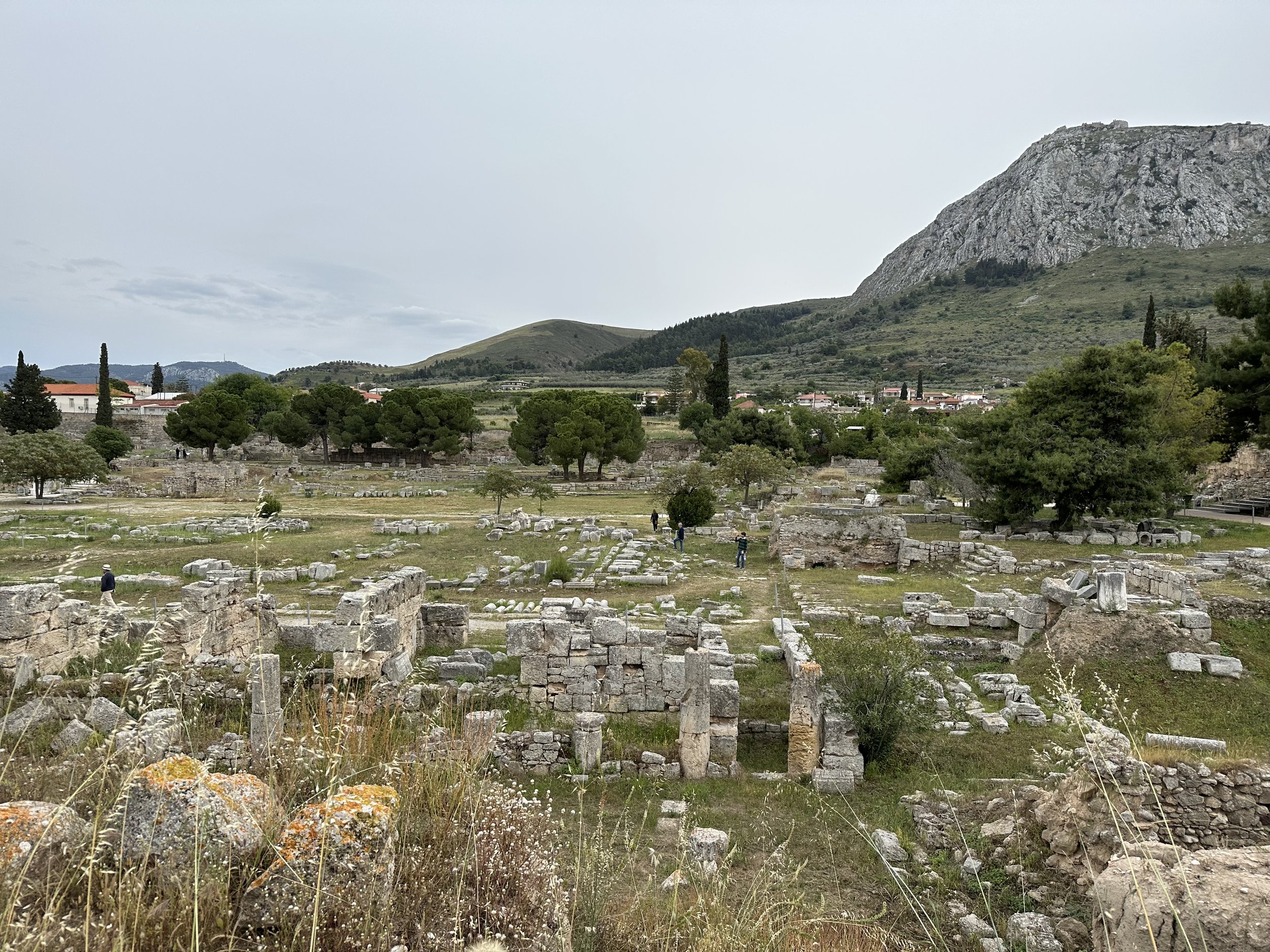On the last day of our pilgrimage we visited the ancient ruins of Corinth. I had been to Corinth twice in the past, but this time we were given more time to study the site.
Upon entering Corinth, our bus driver shared an amusing story. There is a modern city of Corinth, and there is also the ancient city of Corinth with the respective ruins. Because these two Corinths are somewhat separate from each other, the locals of modern Corinth often re-point a sign in their direction, so that the tourists will come to modern Corinth thinking it is ancient Corinth. By doing so, the tourists and pilgrims spend their money at the shops in modern Corinth, and they never actually see the ancient Corinth they were hoping to see! Thankfully we had a trustworthy bus driver and an experienced guide who knew to take us to ancient Corinth.
Corinth has been in existence since 4000 B.C. Named for Corinthus, the son of Zeus, the city has a long history of wealth, trade, and prestige due to its location, and at some periods of history, Corinth was mightier than Athens and Sparta, but by the time of the birth of Christ, Corinth had been in decline and was a Roman colony. As the Romans began to rebuild the city over time, the population of Corinth was one-third free men, one-third slaves, and one-third freedmen. Some believe it was a city of the newly-made rich, and the Romans made it the capital of Achaea in southern Greece. Corinth was also the site of the Isthmian Games, and these were only second to the famed Olympic Games.
The growth of Christianity following the death of Christ was an urban phenomenon. New communities of believers would grow in established cities such as Corinth, Philippi, Thessaloniki, and Ephesus, and these were also cities with sizable Jewish populations. It is believed that there were four letters from Paul to the Christians in Corinth, and what we call the first letter is actually the second letter. Paul refers to his first letter in First Corinthians, but we do not have access to that particular letter. We also know that Paul established the Corinthian Church, and we know that Timothy and Silas were present for this founding, and that he probably made a total of four visits to the nascent church.
When Paul addresses the church in Corinth, he does so as a practical theologian, and this is the type of theology Paul works through all of his letters to the various churches. He addresses the unique challenges and strengths in each place, and from that he does theology, and in the case of the letters to the Corinthians he gives us wonderful understandings of the Eucharist, the Body of Christ, and the death and resurrection of Jesus. First Corinthians is especially rich in regard to these topics.
When visiting Corinth, whether this past time, or the two times I visited before, I am always reminded of the first urban Christians who were faithfully gathering in house churches to expound upon the Word and to share the bread and wine of Holy Communion. The Corinthian Church certainly had its problems when celebrating the Lord’s Supper, and yet the letters also give us a window into the life of some of the first Christians.
Unlike us, they did not have a New Testament canon of scripture with well-defined Gospels, they did not have church buildings providing permanence and stability, and they did not have years of tradition guiding their decisions. They simply had to live the experience of the death and resurrection of Jesus Christ, and they did this by sharing in the Eucharist and by being the Body of Christ. They had their problems, but they were also pioneers. Quickly we see that our situation today is not that different from their situation. We too do our best to live the death and resurrection of Jesus by faithfully gathering for the sharing of the Eucharist.
Father Paul Lillie +
